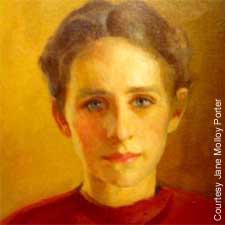|
FRESH STUFF DAILY |
|
|
||
|
|
||
|
|
||
|
SEE ALL SIGNED BOOKS by J. Dennis Robinson click here |
||
She is best known locally for her book Celia’s Lighthouse, about a young poet-in-the-making at the Isles of Shoals. But author Anne Molloy wrote 22 juvenile books in her 40 year career. Two books about Native Americans – Wampum and Captain Weymouth’s Indians are as readable today as ever.
Anne Molloy Anne Molloy’s adventure stories for children illuminate characters and cultures from New York, Europe, and Peru to the nearby Isles of Shoals. She authored 22 books and many magazine articles in the course of her nearly 40-year career. Anne’s love of the coast of Maine and New Hampshire inspired many of her books. Her homes in Portsmouth and in Bucks Harbor, Machiasport, Maine, fulfilled her desire to live continually near the sea. Even as her life broadened with travel and wide interests, she was always drawn back to the Maine coast in summer. Anne Molloy wrote her books in longhand, her feet propped up on a sofa, her paper supported by a checkerboard. She transcribed each manuscript on her husband’s Underwood typewriter. Wherever she traveled, notebook in hand, she recorded daily details and ideas, providing the rich content that distinguished all of her books and brought her plucky heroes and heroines to life. Anne was living with her family in Winchester, Massachusetts when she decided to try her hand at writing. She was in her thirties. Her husband Paul was attending Harvard Graduate School and both children were in school. She drew inspiration and energy by writing with a group of four women. They worked in pairs, alternately sharing their work during extended Monday sessions. The team nicknamed itself the "Two by Fours." Anne’s daughter Jane Porter remembers those Monday meetings as a time when the family dined at home on Sunday leftovers. Coast Guard to Greenland, the story of a boy who goes along on an ice patrol, was inspired by a family friend. "Iceberg Smith," was the commander of the Greenland Ice Patrol. Anne sent the completed manuscript in to Houghton Mifflin in Boston. It was accepted "over the transom," she said, having sent it in cold without any references. It was her first effort. It was 1942. The next year the family moved to Exeter, NH where her husband joined the English faculty at Phillips Exeter Academy, replacing a teacher who was serving in World War II. As her career developed, Anne’s interest in indigenous peoples informed her stories and led her to several non-fiction works. Thanks to her intensive research Wampum, published in 1977, was the first book to fully describe the tribal significance of the colorful beaded belts. She explained to readers young and old, how wampum was used to record Indian history, make treaties, commemorate important events, and also function as trading currency. Another non-fiction title reflects her interest in the hardships of the Pilgrims in Holland before they traveled to the New World. In another, she explored the life of five Native Americans from Maine kidnapped to England by white explorers in 1605. Family events often generated new book ideas. In 1967, Anne Molloy’s son, John Stearns, was chief geologist at a Peruvian copper mine. A visit there inspired the setting of The Girl from Two Miles High, the story of the daughter of a mining geologist in Peru, who was sent to live with her crotchety grandmother on the coast of Maine after the deaths of both parents. A trip to Europe with daughter Jane lead to Shawn and the Boat, a picture book set in Ireland that was selected by the Junior Literary Guild as "an outstanding book for boys and girls". It was illustrated by Barbara Cooney. Of her first 10 books published by Houghton Mifflin from 1942 to 1952, Anne Molloy’s best known local work is Celia’s Lighthouse. In it she imagines the life of Portsmouth-born Celia Laighton who at age four moved with her family to tiny rocky White Island at the Isles of Shoals in 1839. Anne Molloy considered Celia’s Lighthouse her favorite labor of love and saw it republished locally as a popular paperback in 1979. Paul Molloy retired in 1967 and the family moved to Portsmouth in 1976 where Anne Molly became active in the Portsmouth Athenaeum and was the second woman in history to serve on the Board of Directors. She launched the Adopt-A-Book program, which has repaired and conserved many books in the Athenaeum’s collection and argued heatedly for the installation of an elevator to serve the elderly and handicapped library members. Today the Anne M. Molloy Fund at the Portsmouth Athenaeum supports the purchase of books on maritime subjects. Anne and Paul’s daughter, Jane Molloy Porter served as the Athenaeum Keeper from 1986 to 2000. Paul Molloy died in1978 and in 1980 Anne married John Noyes Mead Howells, who died just two years later. Anne Molloy’s passionate interest in indigenous people, especially the Wabanaki people of Northern Maine, never waned. In 1998, a year before her death, she donated her extraordinary collection of over 400 baskets by Native Americans of the Eastern Woodlands to the Abbé Museum in Bar Harbor. SEE BOOK by Jane Molloy Porter
Please visit these SeacoastNH.com ad partners.
News about Portsmouth from Fosters.com |
| Thursday, April 18, 2024 |


|
Copyright ® 1996-2020 SeacoastNH.com. All rights reserved. Privacy Statement
Site maintained by ad-cetera graphics

 Link Free or Die
Link Free or Die



















